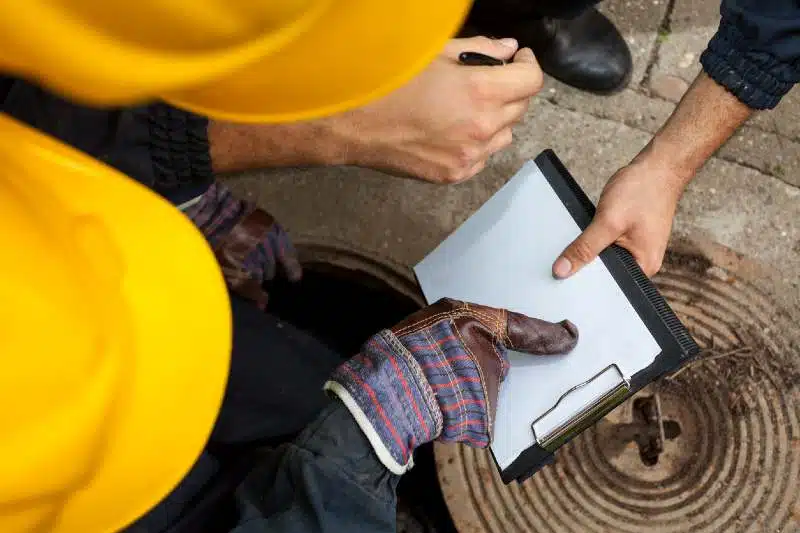What does a drain survey involve is something that we get asked such a lot. As you can imagine. So we will try to answer this here.
Most homeowners never think about their drainage system until something goes wrong. A blocked toilet or a foul smell from the sink indicates a problem. Understanding what a Drain Survey involves can save both money and stress.
Drain Survey is a simple process that helps identify problems before they become huge. This blog will help you know when and why to get a Drain Survey.
What Actually Happens During a Drain Survey?
A Drain Survey uses modern technology to look inside your drainage pipes without digging up your garden. The camera travels through the pipes while recording everything it sees.
Engineers watch the live footage on a monitor, looking for cracks, blockages, tree roots, or collapsed sections. The camera has bright LED lights, so even deep underground pipes show up clearly on screen.
The whole process typically takes between one and three hours. Homeowners can often watch the footage alongside the engineer. This survey helps everyone understand what’s happening beneath the ground.
Why Homeowners Should Consider Getting One
Drain Surveys aren’t just for emergencies. They serve several important purposes that many homeowners overlook. Buying a new house represents one of the best times to arrange a survey.
Hidden drainage problems can cost thousands of pounds to fix. A drain survey conducted before purchase reveals these issues early. Buyers can then negotiate the price down or ask sellers to fix problems before completing the sale.
Common Problems Drain Surveys Detect
Tree roots cause surprisingly common drainage problems. Roots seek out water and nutrients, making drainage pipes attractive targets. They enter through small cracks or joints, then grow larger inside the pipe until they create complete blockages.
Collapsed or damaged pipes show up clearly during surveys. Ground movement, heavy traffic above, or simply old age can cause pipes to crack, break, or collapse entirely.
Scale buildup and fat deposits accumulate over the years of use. Cooking oils, grease, and soap residue stick to pipe walls, gradually reducing the diameter.
When to Schedule Your Drain Survey
Homeowners should consider getting a Drain Survey in several specific situations. Before buying any property, especially older homes, arranging a survey makes financial sense. The relatively small cost protects against discovering expensive problems after purchase.
Strange smells coming from drains indicate potential issues. If cleaning doesn’t solve the odour problem, something might have broken or become blocked deeper in the system. A survey pinpoints the exact source quickly.
Slow drainage across multiple fixtures suggests a main drain problem rather than individual blockages. When sinks, toilets, and showers all drain slowly, the shared pipe likely has issues. Getting a survey prevents emergencies where nothing drains at all.
Choosing the Right Company for Your Drain Survey
Not all drainage companies offer the same quality of drain survey services. Look for businesses that use modern, high-definition cameras rather than older equipment. Better image quality means more accurate problem identification.
Check reviews and ratings from previous customers. Companies with consistent positive feedback typically deliver reliable services. Pay attention to comments about report quality, engineer knowledge, and response times.

